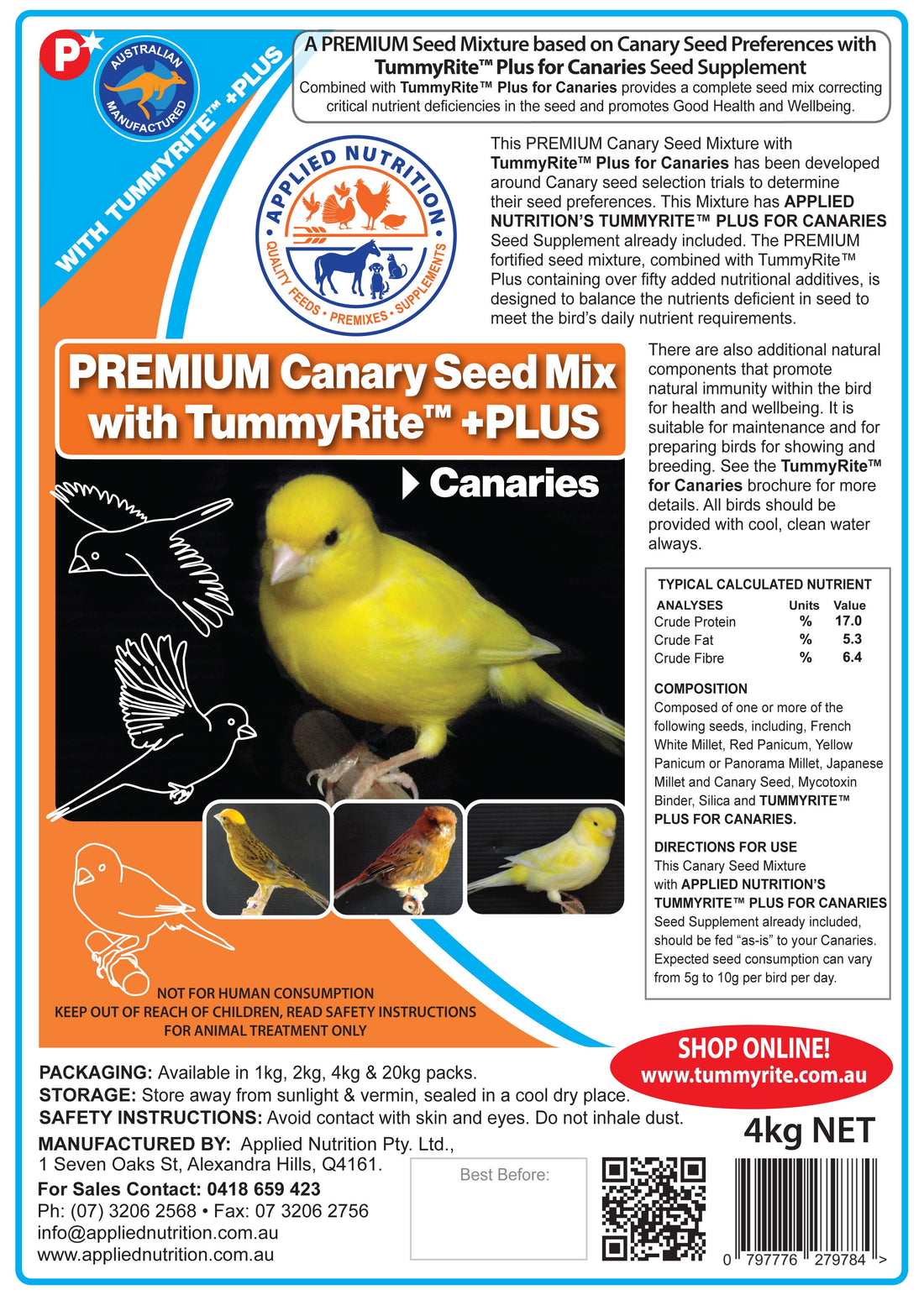
GIZZARD IMPACTION – CAUSES AND SOLUTIONS
I was recently called out by a very experienced Canary Breeder to investigate a situation where he was losing his young canary chicks after they had fledged, and after they were placed in a separate cage facility. It was apparent from the condition of these birds that they were “going light”, looked ill thrifty and some were dying.
I had a look at his feed and found that there were components in there that were totally inappropriate for passerine birds such as canaries. There was a large amount of fibrous ingredients in the diet and some very large seeds, such as sunflower seed. Secondly, I also observed that on the floor of the cages he was using to house the young birds there was sawdust and shaving as a litter. The size of the dishes in the cage was also quite small and feed space was limited.
At the request of the Canary Breeder, I agreed to post-mortem one of the birds that had died recently. My observations were as follows:
- The bird was extremely light in weight.
- I removed the feathers around the body and observed a very inverted “V” shape and a sharp keel bone and most of the breast muscle was significantly reduced (caved in).
- I opened the abdomen and observed the liver, lungs and heart were OK. No signs of respiratory issues.
- I then began looking at the gastrointestinal tract, working my way down from the mouth to the oesophagus, crop, proventiculus (true stomach) and finally the gizzard. The crop was non-existent, proventriculus was small but OK, but the gizzard was very hard and round like a lead sinker or musket bullet.
- I tried to cut into the gizzard to look at it contents and found it was very compacted and hard and full of fibrous material. The entrance to the duodenum from the gizzard was obstructing the smooth flowing of food material from the gizzard into the duodenum.
- This compacted gizzard was not able to do its job properly of reducing the particle size and allowing the back reflux motility of the duodenal contents (containing enzymes, emulsifiers, bile acids) into the gizzard to mix with the food for proper digestion.
- The duodenal loop was intact with the pancreas sitting nicely in the duodenal loop, but it was empty of contents. Therefore, no absorption of nutrients.
- One final observation which I noted doing this post-mortem was how delicate and refined the organs are within this small bird. The intestinal tract is a long narrow tube that food particles must pass. It doesn’t take much for such a fine tube to become blocked if the particle size of the food is not reduced to a suitable size by a proper functioning gizzard.
MY CONCLUSION
The birds were starving to death due to gizzard impaction and lack of food and nutrient absorption in the gastrointestinal tract. The loss of body condition in this bird indicated there was mobilisation of body reserves to sustain the bird initially and hence the significant loss of breast tissue. Death was inevitable.
ISSUES
The initial issue was the inability of the bird to find food when placed in the separate cage away from its parents after fledging. The first contact with the environment in the cages was with the sawdust/shavings litter on the floor of the cage and not the seed mix. It was evident the bird has begun to eat some of the litter, and this ultimately had contributed to particles of litter being lodged in the gizzard. Over time there was a build-up of fibrous material in the gizzard which blocked the entrance to the duodenum.
Secondly, I do not discount the observation that an unsuitable fibrous feed was being given to the young birds compounding the fibre intake problem. It was a mixture of all sorts of odd ingredients with little attempt to balance the diet according to the bird’s daily nutrient requirements.
Thirdly the feeding of greens may be an issue. Feeding greens such as Bok Choy are high in cellulose not easily digested by the bird. Also, Bok Choy is a Brassica spp and contains glucosinolates which is toxic if fed raw continuously to birds. There is also some suggestion that continuous feeding of Bok Choy can cause hypothyroidism (underactive thyroid) due to a reduction in the uptake of iodine.
SOLUTIONS
- Remove the sawdust litter from all the cages and replace with butcher’s paper or newspaper on the floor of the cage. In my own cages I have wire floors so there is no need for litter.
- Change the seed mix and feed a seed mix suitable for canaries (minimise fibre). We recommend our Premium Canary Seed mix supplemented with TummyRite™ Plus for Canaries. This product was developed from our seed selection trials we have recently conducted with canaries.
- For these young birds still growing and feathering need to be fed a protein supplement such as our Prosperity™ Protein supplement until they reach their mature body weight.
- Increase the feeding space. Ensure the birds can find food and water immediately once they are placed in the cage without parents by increasing the number of flat dishes containing the Premium Canary Seed mix supplemented with TummyRite™ Plus for Canaries. and the Prosperity™ protein supplement.
- Do not feed green fibrous feeds to young Passerine or Psittacine birds.
WHAT IS THE VALUE OF FEEDING GREENS TO PASSERINE BIRDS?
I do not feed greens to my birds, other than occasionally feeding seedling grass heads, which my canaries and finches love. However, once the seeds in the seed heads are exhausted, I remove the stems and other fibrous material.
I want to pose several questions about feeding greens. What is the purpose of adding greens to a bird’s diet? Is the bird able to digest these greens? What nutrients do these greens deliver to the birds that are so important? Do some of these greens contain toxic components i.e., the Brassicas which contain glucosinolates? What are the risks to my bird’s wellbeing if I feed these greens?
Greens are composed largely of a fibre component called cellulose. Birds do not have the capability of digesting cellulose as they do not have an appropriate cellulase enzyme in their GIT to breakdown the cellulose. Leafy greens do contain some sugars which can be digested, but the birds obtain their carbohydrate from the seed kernels, so sugar from the greens is of little consequence. The protein content and composition from the greens is deficient in many essential amino acids, such as methionine and lysine and it contains many non-essential amino acids and so is not really contributing to the overall critical amino acids required by the bird for good growth and feather development. If anything, the excess non-essential amino acids are an extra nutritional burden on the bird requiring energy to catabolise and excrete them.
Finally, an excess of high fibre greens in the diet may contribute to gizzard impaction which can lead to bird loss. I do not see much value in feeding greens to granivorous birds.
For any feed ingredient you wish to feed to your birds, consider if it is beneficial or not? Food for thought!